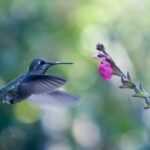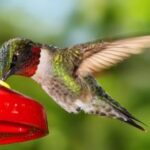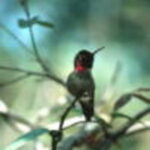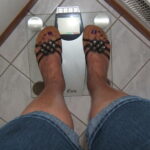Let’s face it, you can’t bird watch without binoculars. It is almost impossible to tell certain species of birds apart without being able to see them close up (or at least closer than you can probably get.) Even better binoculars will allow you to study markings on feathers, eye stripes and other identifying features, even on birds that won’t let you get remotely near them. You can also watch bird behavior while the birds remain unsuspecting of your presence. But choosing the perfect binoculars can be a daunting task; just like choosing a camera, there are many variables to consider. Below are some tips and suggestions for picking a good pair of binoculars that will help you get the most satisfaction from your bird watching.
Magnification. This is the most important factor to consider, since this is the reason you buy binoculars. Look for a magnification of at least 8x for decent bird watching (meaning whatever you are looking at through your binoculars looks eight times closer than it really is). This is the first number that you will see on your binoculars (for example, 8×42.) The second number is the diameter of the front lens (also called the objective lens) of the binoculars, measured in millimeters, which indicates the brightness of the image.
Weight. The last thing you want is to invest time and money in a pair of binoculars only to discover you don’t like using them because they are too heavy, or too unsteady when you hold them to your eyes. (Or just annoying to try and tote around with you while bird watching.) The larger the second number on your binoculars (see above, 8×42, so in this case the 42), the bulkier they will be. Of course, larger objective lenses are better in low light, so you trade some functionality. This is purely a personal choice for you as a bird watcher. Anything with an objective lens of 30 mm or smaller is considered a pair of compact binoculars; if you choose a pair that is 50 mm or more, bring a tripod.
Coating. Look for full or multi-coated lenses. This means that the internal lenses have more than one layer of antireflective coating on both sides. This affects the brightness, contrasts and color accuracy of your bird watching. Multi coated lenses are better than fully coated lenses, which only have antireflective coating on some sides.
Eye relief. This is very important if you wear eye glasses while bird watching. Eye relief is how far back your eyes can be from the binoculars’ eyepiece while still seeing the full field of view. If you don’t have enough eye relief, you will only see the center of what you are looking at, sort of like peering through a hole in a fence. Eye relief of 14 to 16mm usually works well for eye-glass wearing bird watchers.
Cost. Swarovski, Leica, and the other top brands can cost you $2,500 and up for bird watching binoculars. For example, the Swarovski EL 42 Swarovision 10×42 have a 336-foot field of vision and are fogproof, watertight to 13 feet, and also have 20mm of eye relief (which is awesome, especially if you wear glasses.) But be prepared to pay over $2500 for these bird watching binoculars. Mid-priced, quality binoculars (under $500) for bird watching can be purchased from Pentax and Nikon. More affordable but still great binoculars are made by Bushnell, Pentax and Nikon. The Pentax DCF NV 8×36 ($200) has fully multi-coated lenses, and they are waterproof and fogproof. The eye relief is 16mm, which is good as that is the recommended eye relief if you wear glasses. This is a great pair of binoculars if you are new to bird watching.
Source list:
Personal experience
http://www.birding.com/binoculars.asp
http://www.consumersearch.com/binoculars/important-features







